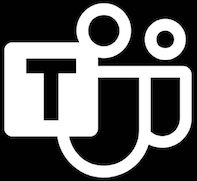Mobile App Development Trends for Rest of 2021
The mobile app development industry is continuously evolving. Technology advancements, consumer demands, and a wide range of other factors have a direct impact on mobile app trends.
Staying up to date with the latest trends is arguably the most crucial aspect of success in this space. As a member of the Forbes Technology Council, I’m constantly researching patterns and communicating with other tech leaders about gaining an edge.
Mobile app resellers need to keep up with new trends to better serve their clients. The same goes for content creators and producers ready to take their brands to the next level with mobile development.
Are you prepared for the mobile app development changes in the coming year?
The list below is more than just a hunch or my personal opinion. I’ve used fact-based research to come up with the top app development trends that will dominate 2021.
1. Internet of Things (IoT) App Integration
The IoT is far from a new concept. But the rise in mobile penetration across a broad range of sectors and categories has created seemingly endless opportunities for the Internet of Things.
People have grown accustomed to using technology to improve their everyday life.
The IoT describes the growing network of devices connected to the Internet, providing convenience and automated control to consumers. Smart home technology is a perfect example of the rise in IoT and mobile app development.
Mobile apps can be used to adjust the thermostat in a house from a remote location, lock or unlock a front door, and connect to home security systems. Refrigerators and other household appliances can also be connected to mobile apps.
The global Internet of Things market is expected to reach $222 billion in 2021. $161 billion of that estimate will come from software, like mobile apps.
That’s a 14% increase from 2019. As you can see from the graph, the IoT is poised for steady growth in the coming years with software leading the way.
According to Statista, the revenue from technology associated with the Internet of Things will eclipse 1.6 trillion by 2025.
In 2021, I expect to see more mobile app development with the IoT in mind. Household devices, automobiles, and healthcare are three specific markets to keep an eye on.
2. Apps For Foldable Devices
It feels like a lifetime ago, but one of my first cell phones was a flip phone. Phones have clearly changed over the last decade. Touch screens with one or no buttons have taken over the market.
But over the last couple of years, foldable devices have begun making a comeback. 2019 saw the release of foldable devices like the Samsung Galaxy Fold, the Huawei Mate X, and the new Motorola Razr.
These smartphones fold to compress or expand the screen size based on user preferences. For example, a user might make a call with the device closed, but watch a video on a larger screen by unfolding the device.
From an app development perspective, resellers and content creators need to account for these devices when building or updating an app.
The idea is that an app should seamlessly adjust its display as the screen folds or unfolds.
Right now, foldable devices are just a sliver of the overall smartphone market share. But this will change in the coming years. According to a 2019 study by USA Today, 17% of iPhone users and 19% of Android users are excited about buying a phone with a foldable design.
According to Statista, roughly 3.2 million foldable phones were shipped in 2019. This forecast is expected to reach 50 million units by 2022. For that growth to happen, 2021 will be a big year for foldables, which means app developers must plan accordingly.
3. 5G Technology
The rollout of 5G will have a major impact on 2021 app trends. For developers, resellers, and creators, this technology is poised to change the way apps are used and created.
Take a look at the expected growth of 5G smartphone connections over the next four years.
2021 will have roughly 3.5 times more 5G connections than in 2020. These connections will nearly triple by 2022.
What does this mean for mobile app development?
Speed and efficiency will drastically improve. In fact, 5G is expected to deliver a 10x decrease in latency, while boosting network efficiency and traffic capacity. Compared to 4G, 5G will be up to 100 times faster, depending on the mobile network operator.
The penetration of 5G will ultimately boost the functionality of mobile apps. This will allow developers to add new features to apps without negatively affecting the app’s performance.
Developers and mobile app resellers should also use 5G network speed during the testing and development stages of building an app.
4. Development For Wearable Devices
Wearable technology has been trending upward for years now as well. This isn’t necessarily a breakthrough in the market. We’ve seen smartwatches, trackers, and fitness bands for a while now.
But wearable devices have yet to reach their full potential.
Take a look at this graph from eMarketer about the penetration of wearables in the United States.
While we’re not seeing a staggering jump year-year-over year, the growth is still steady. The wearables trend has changed and will continue to change the way that mobile apps get developed.
For instance, Apple made a big announcement about wearables and app integration at WWDC 2019. The new watchOS 6 has brought the Apple App Store to Apple Watch. Independent apps are being built specifically for these devices. This has created an enormous opportunity for app resellers and content creators.
In 2021, more mobile apps will be made with wearables in mind. Users will be able to download tens of thousands of apps directly from their wrist.
We’re just beginning to scratch the surface with wearables and mobile app integration. The coming years will be exceptionally progressive in this category.
5. Beacon Technology
Beacon technology has been embraced by a wide range of industries. From retail to healthcare and hospitality, beacons can add advanced functionality to nearly any mobile app.
The first mobile app beacons were developed back in 2013. But over the last few years, significant advancements have been made to this technology.
Here’s an example of how beacons work with mobile apps. Let’s say you’re a mobile app reseller that builds apps for retailers. Your clients can install beacons in their stores that connect with a user’s smartphone via Bluetooth if the app is on their device. When a user passes by a beacon, they can be instantly notified about a sale or special on products in that store.
Beacons can also help track buyer behavior in stores. They can detect if a user is spending a significant amount of time in a particular aisle. The app can automatically trigger a push notification to entice a sale at a later date related to those products.
The main benefit of beacon technology is proximity marketing. It ultimately improves the customer experience within a mobile app.
According to Statista, the beacon technology market is increasing at a compound annual growth rate of 59.8%. The estimated market value will reach $56.6 billion by 2026. That’s more than ten times higher than the $519.6 million worth from 2016.
6. Mobile Commerce
I can’t make a list of 2021 app trends without mentioning mobile commerce. This trend has been dominating 2019, 2020, and will continue to thrive in 2021.
It seems like everyone is leveraging mobile apps to increase revenue. From large retailers to individual content creators and personal brands, there is plenty of money to be made in this space.
Mobile ecommerce functionality is a top feature for mobile app resellers to showcase during client pitches. It seems like every day another business is launching an app to drive sales.
We’re not quite at this point yet, but we’re almost reaching the age where you need a mobile commerce app to stay competitive. Every single person and business selling online is competing with giants like Amazon. To keep pace, you need to replicate what makes those brands so successful; an app is at the top of that list.
By the end of 2021, more than 72.9% of total ecommerce sales will come from mobile devices. Apps play a significant role in the current and future success of mobile commerce.
I could go on for days listing dozens of trends about mobile commerce. But in an effort to keep things brief here, you can check out our complete guide to mobile ecommerce statistics.
2021 will continue to be a big year for ecommerce app development. Plan accordingly.
7. Artificial Intelligence (AI)
Artificial intelligence and machine learning both penetrated mobile app development years ago. But we’ve only just begun to scratch the surface with how these advanced technologies can be used.
When we first think about AI, virtual assistants like Siri or Alexa come to mind. However, the use cases go far and beyond this for app development.
Last year, Apple released Core ML 3. This latest version of the iOS machine learning framework was built to help developers embed AI technology into their apps.
Examples of AI features that can be implemented into a mobile app include:
- Image recognition
- Face detection
- Text and image classification
- Sentiment recognition and classification
- Speech recognition
- Predictive maintenance
Artificial intelligence can make apps smarter, and ultimately improve the performance at every level. From the backend development process to the frontend user experience, AI will change the way apps are built-in 2021.






 Text Us
Text Us info@geekmob.ca
info@geekmob.ca Schedule Teams
Schedule Teams
